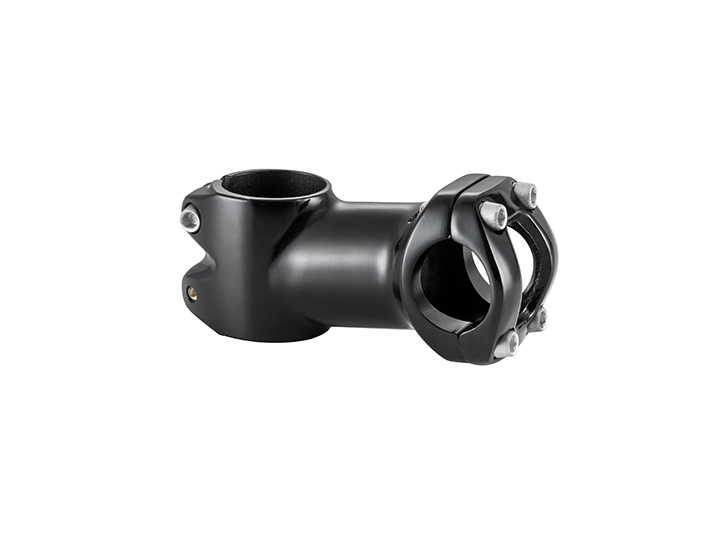Shocks or shock absorbers and suspension forks are at the very heart of the best mountain bike frame. Most bikes on the market come equipped with an air-sprung shock making the choice between these two suspension options unfairly weighted. However, the original shock absorber – the coil – is making a huge comeback, which begs the question, which shock absorber is best: coil or air?
MTB enduro racing for beginners Air Spring

Suspension requires one key component in order to work properly and that’s a spring: as such air suspension uses an air spring and coil uses a coil spring but, in reality, there’s much more to it than just the mechanics. Let's dive a little deeper.
Both of the suspension components rely on seals but the air option uses more seals than a coil in order to keep both air and oil (for the damping circuit) where they should be – a coil component only uses oil. This, as well as the overall pressure that’s pumped into an air shock, means that a coil shock has less stiction, thus a coil provides better small-bump sensitivity as it requires less force to activate its travel.
Another clear difference is weight. Air suspension just needs an air can, which is nothing in terms of weight when compared to the heavier coil spring. And because an air shock is tuned to a rider’s weight, the weight of the shock doesn’t change. Coil shocks use a solid coil spring which varies in weight depending on the rider. A heavier rider will need a bigger – read heavier – spring.
Coil and air shocks also offer different levels of adjustment. Sag is the most important of adjustments. It needs to be set to a rider’s weight by inflating or deflating an air shock. This is infinitely adjustable (to the shock’s maximum pressure) somewhat on the fly using a shock pump. When setting the sag on a coil shock, you’ll need to buy the correct coil spring for your weight.
Let’s dive into what linear and progressive mean. A progressive spring needs more force the further it travels in order to compress whereas a linear spring requires the same amount of force across the board.
To put that into the context of suspension, air suspension typically is progressive, so the deeper a shock moves into its travel, the more support and bottom-out resistance it’ll offer. A coil shock moves more freely towards its end stroke because it’s more linear.
Coil and air suspension are favoured by different riders in different genres. For example, cross-country mountain biking athletes will appreciate the weight savings that air suspension presents, however, downhill mountain biking riders and enduro riders will benefit more from the extra grip that coil suspension offers through its improved small-bump sensitivity.
However, both types of suspension have further impacts on how a mountain bike rides as a result of their progressive or linear behaviours. Air suspension is generally more poppy, for lack of a better term, as it reaches a greater level of support or resistance as the suspension compresses.
Coil suspension is almost the opposite as it encourages the wheels to track the ground better but, because there’s not as much support, a bike may not be as playful or as keen to get airborne. Coil can also calm down a ride when negotiating technical sections at speed. However, due to the lack of stiction, a coil shock may also reduce a bike’s pedalling efficiency.
The largest benefit of coil suspension is that it doesn’t warm up quite like air while in use. That means a coil shock or a fork’s performance will remain consistent during big descents which is why you’re more likely to find coil suspension on downhill and enduro bikes.
Most of the time, plenty of research will help find the answer but be very careful because not all bikes are designed to work with coil suspension. That’s because a bike’s suspension platform is created to work in a particular way and increasing a frame’s linearity can compromise its whole ride character. There are also frame clearance issues.
But it’s all about what you’re looking for in your bike. If you want to plough through techy sections, a coil shock will help your bike remain composed while doing so. If you want to hop and jump through the same pieces of trail, the progression of an air suspension is what you’ll benefit from the most. If you’re looking for maximum weight savings, again, air is the way to go. And, as mentioned before, if you’re looking for consistent performance during big descents, the coil shock is for you.
Performance aside, air suspension allows for a lot more adjustment than coil both in terms of the ease of pumping in air to adjust sag but also in the number of clicks within the rebound and compression dials.
Tech Editor here at off.road.cc Liam can also be found photographing bikes as well as revelling in cycling's intricacies. Whether it's gravel, mountain, or e-MTB as long as it's a bike on dirt, he's happy.
off-road.cc Editorial and general enquiries: info@off-road.cc Advertising and commercial: sales@off-road.cc
All material © Farrelly Atkinson (F-At) Limited, Unit 7b Green Park Station BA1 1JB. Tel 01225 588855. © 2008–present unless otherwise stated.
Privacy policy and terms and conditions of use.
Mountain bike, bikepacking and gravel bikes. Reviews, buying advice and news. off-road.cc is dedicated to bringing you the best coverage of all off-road riding

Lower Control Arm Our sister site for road bikes... road.cc Our sister site for e-bikes... ebiketips.co.uk